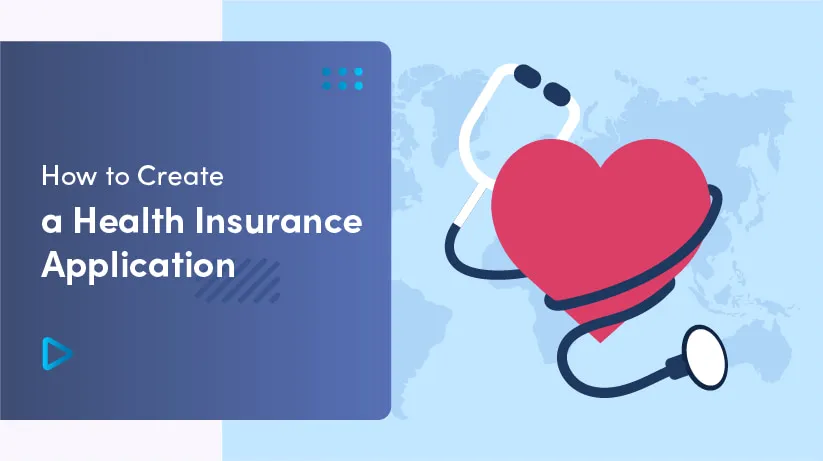Health insurance platforms are complex systems bringing together patients, doctors and brokers allowing them to constantly interact with each other. Those platforms are built from three separate components: a patient-facing one, one for healthcare providers and another for insurance companies. Health insurance mobile applications like Oscar Health, Aetna or Health4me allow their customers to get insurance while avoiding excess paperwork, find and compare plans that best suit their needs as well as find a doctor in a specific insurance network.
According to the Insurance Europe market report, in 2017, total European health premiums and health insurance grew by 3.9% to €132bn and by 3.4% to €106bn respectively. Each health insurance system in the UK and Europe is regulated by the NHS.
On the other hand, private health insurance in the US generated total revenue of $938 billion in 2018, according to an IBISWorld report. Total revenue for the US health and medical insurance market in 2019 is estimated at $1 trillion. Overall, the annual growth rate of this market was about 7% from 2014 to 2019. In the US, medical applications have to comply with the HIPAA regulations as well as the HHS.
In this article, I will talk about why and how to develop a healthcare application, must-have features and the development process.
Why build a health insurance app?
Mobile phone usage statistics show that 90% of time spent on mobile devices is spent in apps, and there were 194 billion downloads of mobile applications in 2019. This shows that the number of smartphone users will keep on growing and the app industry will thrive.
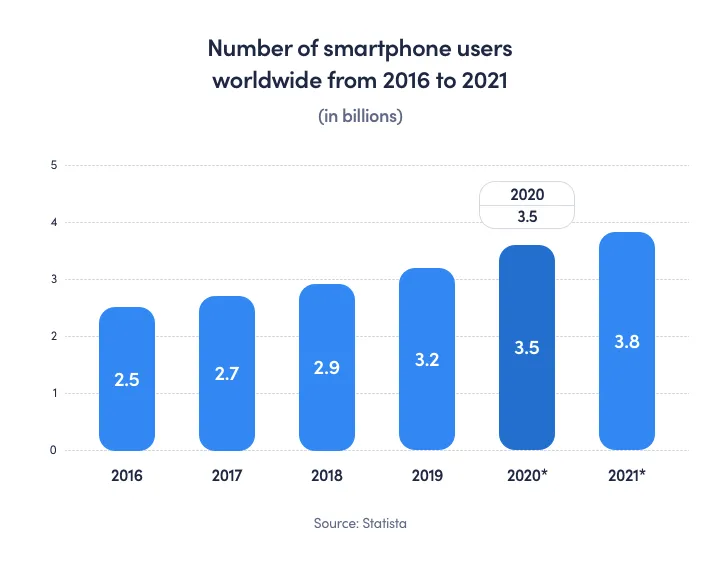
Applications can solve almost every problem and businesses that build their own solutions become more successful every day. Insurance companies are no exception. Having a health insurance app allows them to automate some of the processes, grow the customer base and simplify communication.
Health insurance application is a type of health software which, from the patient’s side, bring lots of advantages like:
- avoiding long queues and shortening the waiting time
- management of insurance information
- appointment scheduling
- information processing and limiting excessive paperwork
- automation of insurance renewal process
Healthcare apps are offering a convenient way to get insurance, schedule appointments and receive coverage. This does not include a lot of paperwork, queues and long waiting times.
In the US, customers can choose from four levels of policies: bronze, silver, gold and platinum. Insurance applications help to solve the problems of choosing the right policy by analyzing users’ information and offering the most suitable plan. This is most definitely one of the advantages of a health insurance application.
Market analysis: big names in the health insurance industry
Before you start building your own health insurance solution, it would be best to conduct a solid market analysis. Quickly, you will discover three of the popular solutions out there: Aetna, Health4Me and Oscar. Let’s focus on them for a minute.
Developed by Aetna Life Insurance Company, Aetna Health is a health insurance application that allows users to manage their healthcare-related operations and communication.
The application itself has some unique features like:
- medications lookup
- personalised guidance and support
- access to a network of healthcare providers filtered by location, profile and speciality
- medical insurance plan management, claims and renewal
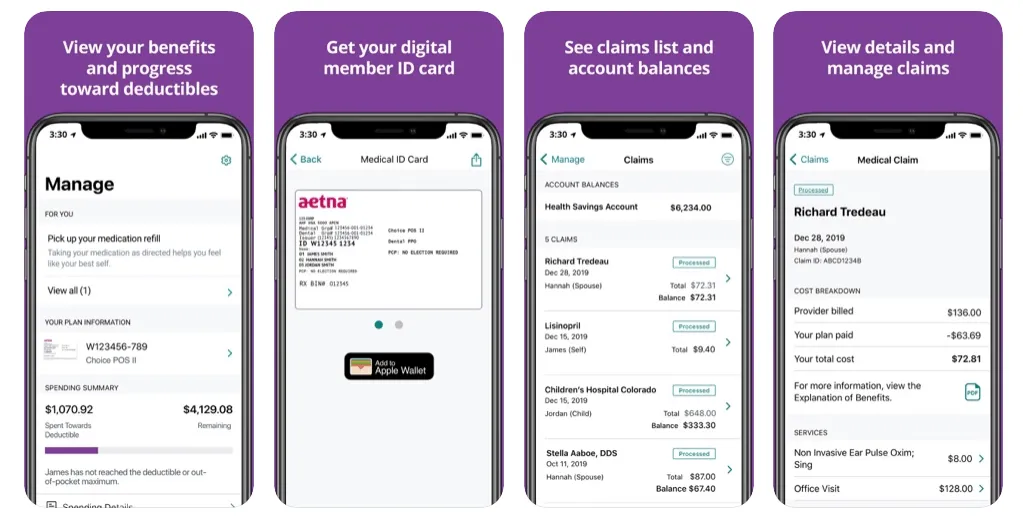
A mobile application by United HealthCare Services helping to manage health care. It allows locating physicians near you as well as managing prescriptions. The top features include:
- search for physicians, pharmacies or facilities by location or speciality
- estimation of health care and drug costs
- compare medication and refill prescriptions
- contact an experienced nurse for health information
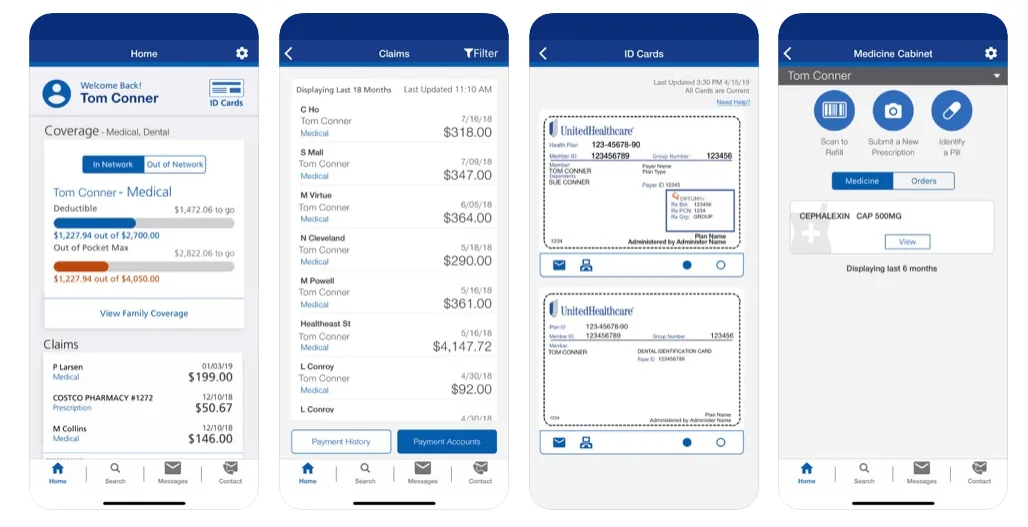
One of the most popular health insurance applications out there. It provides insurance plans for businesses, families and individuals. Oscar helps its clients to:
- choose the right insurance plan
- purchase and renew policies
- search for doctors and communicate with them
- evaluate symptoms and search for drugs
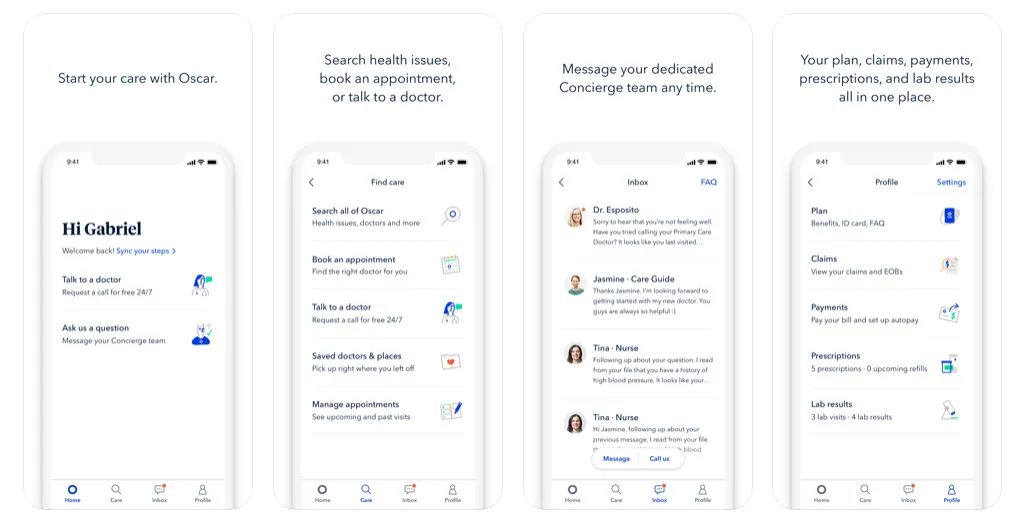
Try our developers.
Free for 2 weeks.
No risk. Just results. Get a feel for our process, speed, and quality — work with our developers for a trial sprint and see why global companies choose Selleo.
Must-have features of a health insurance app
Insurance mobile apps are basically a combination of three services:
- a functional patient app
- an app for healthcare providers
- a solution for the processes inside insurance businesses
Having that in mind, when building your own solution you should make sure your application has all the necessary features for each of the groups. Oscar, Aetna and Health4Me all have some unique features, but some of them are shared. The most popular features from top insurance companies are:
- access and share of ID cards
- check plan coverage
- see, sort and pay claims
- check account balances
- pay premiums
- search and contact healthcare providers
- estimate costs for doctors’ visits
- get information about medications
- compare drug prices
- find the closest pharmacy
- store biometric data
- check and refill prescriptions
- check out-of-pocket expenses
- view deductibles
To create a working MVP you do not need to implement all the features at once. Add the most important ones first and test it on a small group of people. Here is the list of the MVP must-have features:
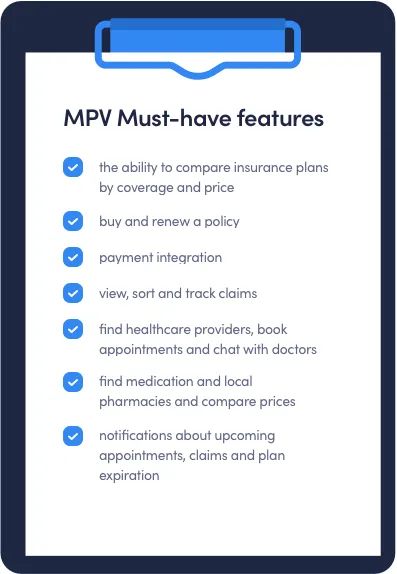
- the ability to compare insurance plans by coverage and price
- buy and renew a policy
- payment integration
- view, sort and track claims
- find healthcare providers, book appointments and chat with doctors
- find medication and local pharmacies and compare prices
- notifications about upcoming appointments, claims and plan expiration
Remember that privacy should always remain a top priority. Ensure your product meets the requirements of health products like HIPAA, PIPEDA and European directives.
Development process
If an idea for a mobile health insurance app development came to your mind, it is worth considering some factors in advance. They are as follows:
- Be aware of your market - your product should address the issues your target clients are facing.
- Give your audience what they want - medical applications are advanced systems that should cut waiting time, aid in communication and get rid of excessive paperwork. Make your application something that serves the users.
- Analyze the market - you should know the environment you are entering, understand the necessary precautions and regulations.
As far as the development process is concerned, we can narrow it down to 4 easy steps:
- Start with an MVP - having an MVP will give you the opportunity to gather feedback from a small group of people, before the actual product launch.
- Design your app - your product should have a basic yet advanced design with a user-friendly interface. Do not forget about search and comparison functionality.
- Ensure your product is compliant with international regulations - HIPPA for the USA, PIPEDA for Canada and Data Protection Directive 1995/46/EC, the e-Privacy Directive 2002/58/EC/ IEC 62304 as well as GDPR for Europe.
- Test it - testing is an important part of product development. It will help to avoid possible issues and errors.
How much will it cost?
The overall costs will vary, depending on the implemented features and the size of the team and the development strategy. You can choose to build an in-house team, augment your existing team or outsource altogether. It will all have an influence on the final costs. Before you start the work, it is best to plan out the costs.
Talk to your development team and discuss everything in advance. Decide whether your application will be a mobile or web solution. Take into consideration that QA testing will also influence the price and the time needed to finish the product. The development team will be able to give you time frames and cost estimates.
Conclusions
Healthcare software development is pretty challenging. At the very beginning, you have to carefully analyze the healthcare sector’s situation in your target country and learn about the regulations you must follow.
During the development process, remember to first implement the main features of the app to build a strong network of healthcare providers and users.
If you are looking for a skilled team to build your health insurance app, contact us. Our developers will ensure that your product is of top-notch quality and meets all the requirements. Send to us your idea and we will help sketch a unique MVP design for your application.
If you want to read more about outsourcing software development, read our article Why MVP Development Should Be Outsourced.
